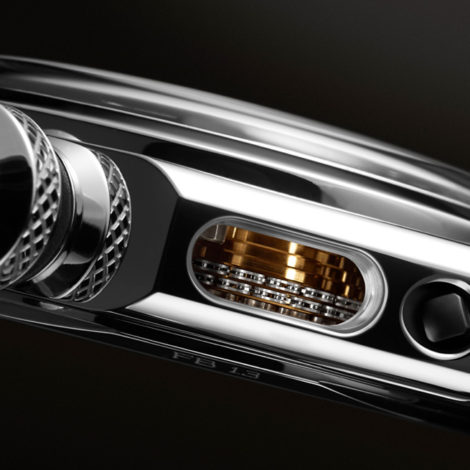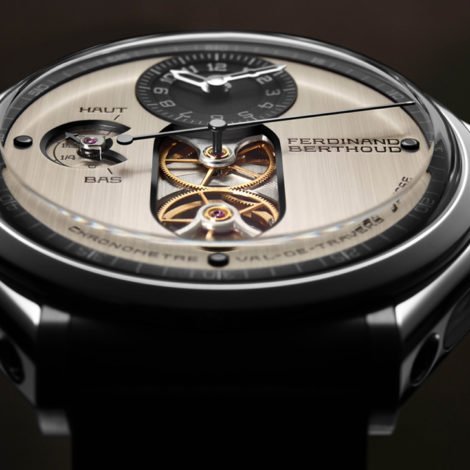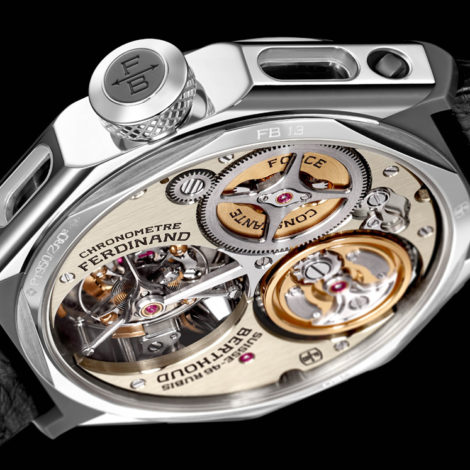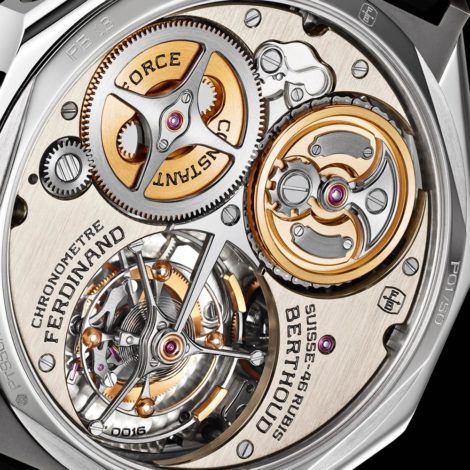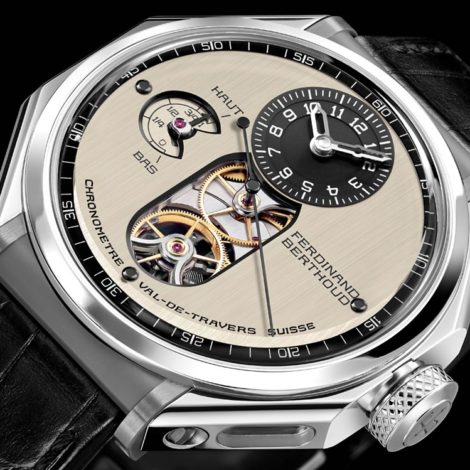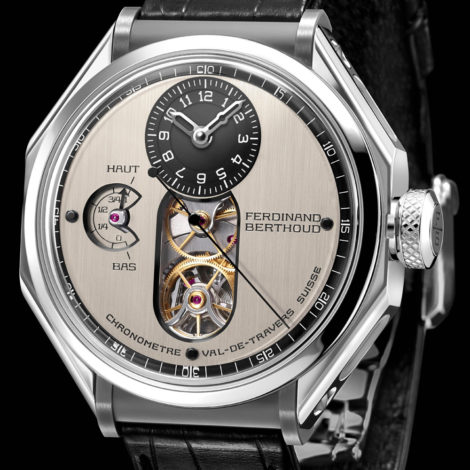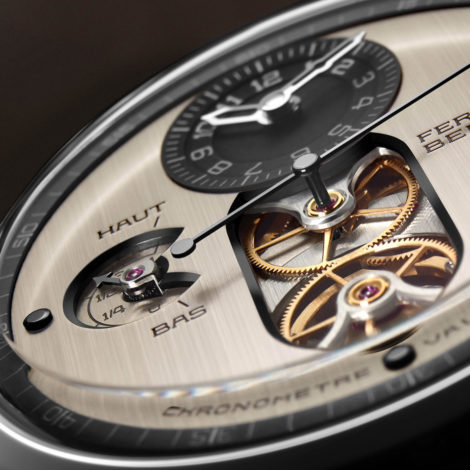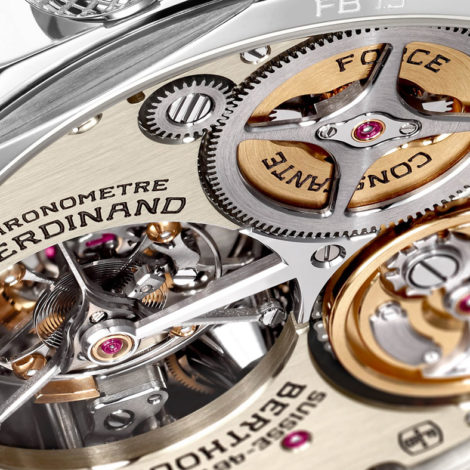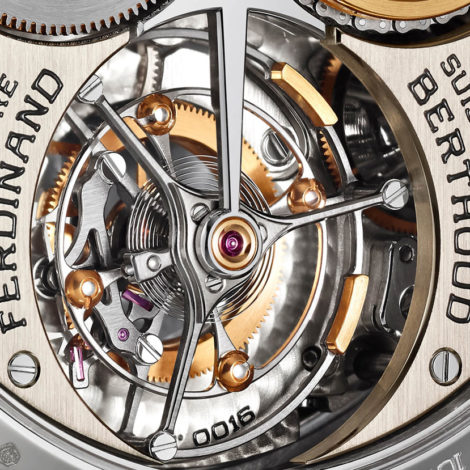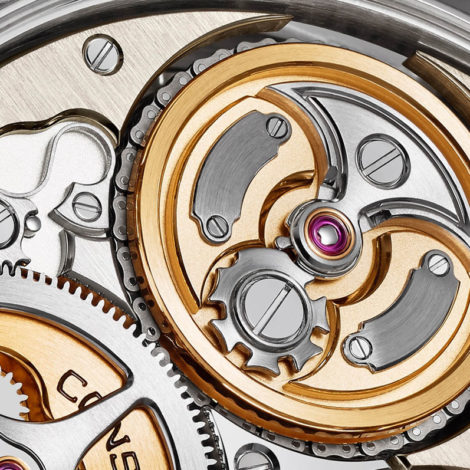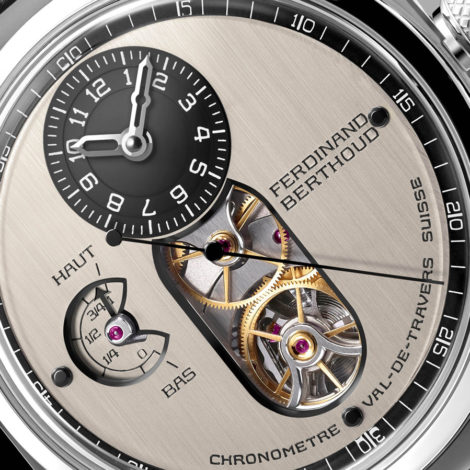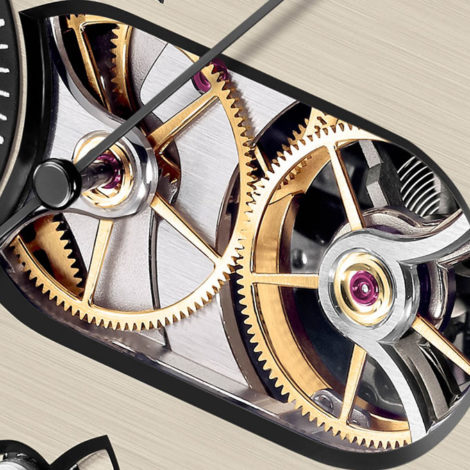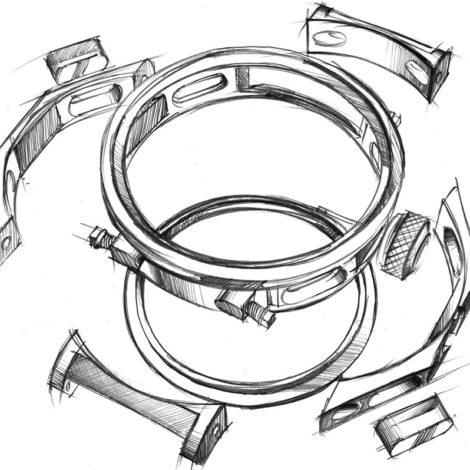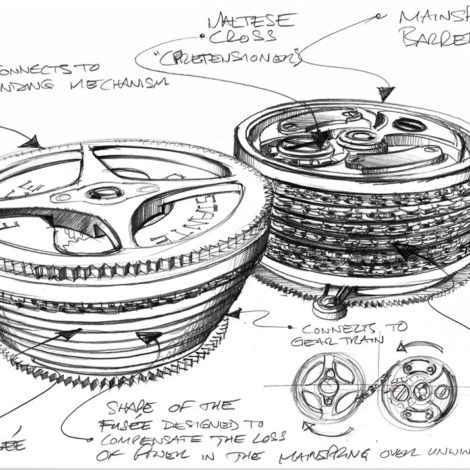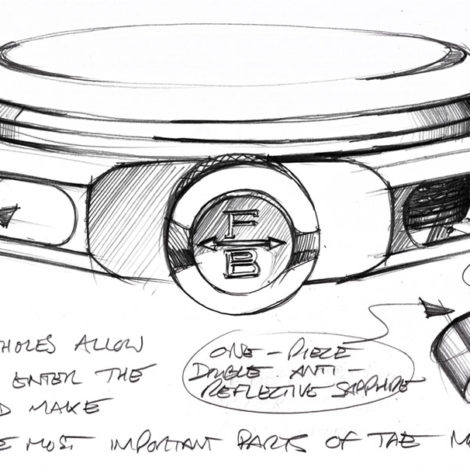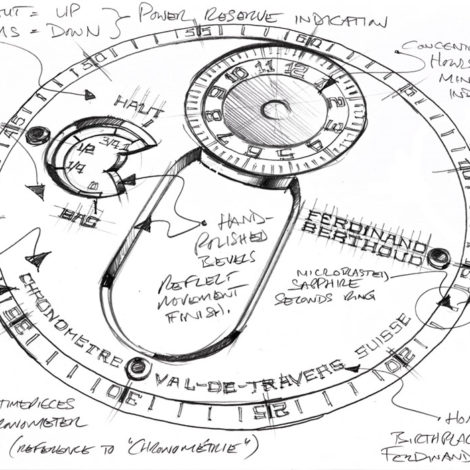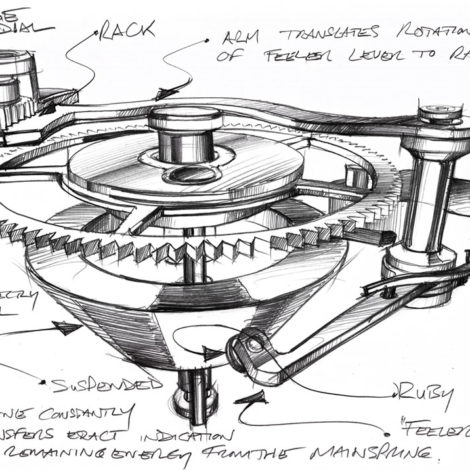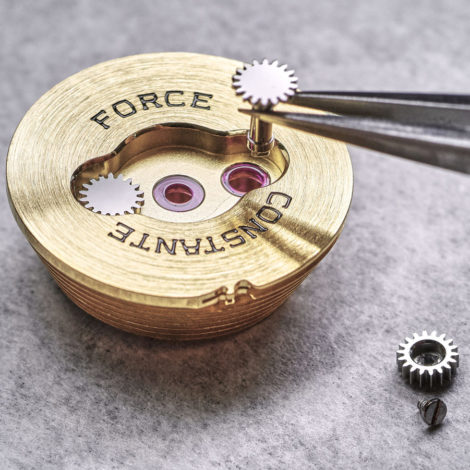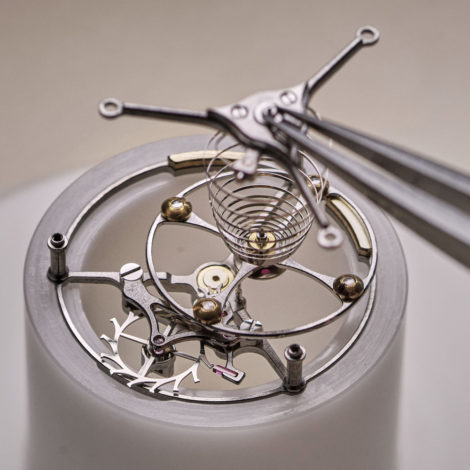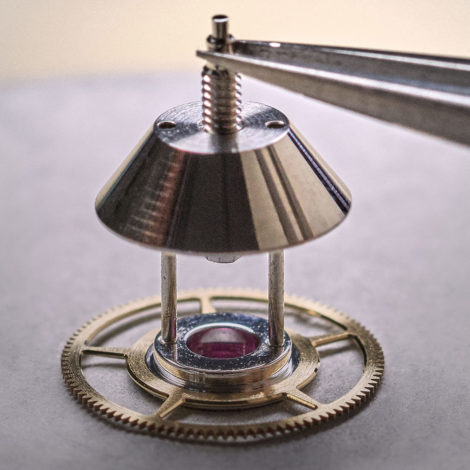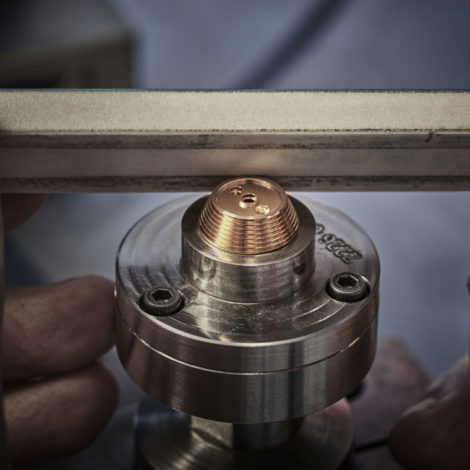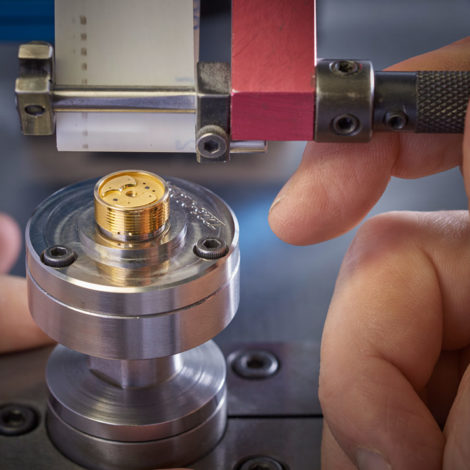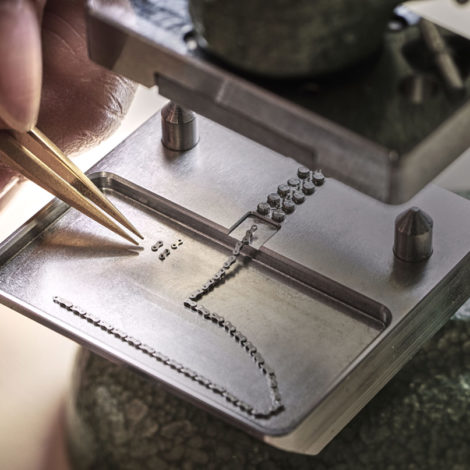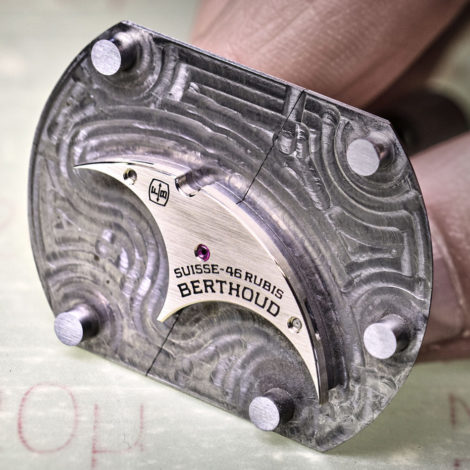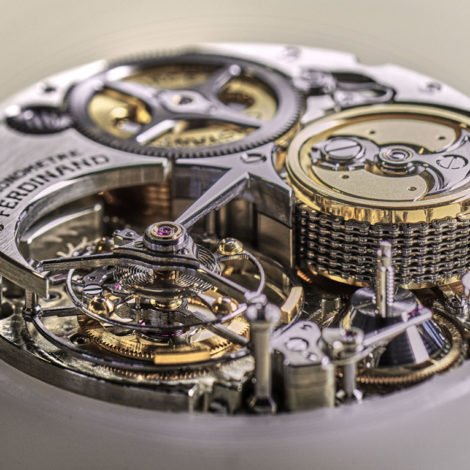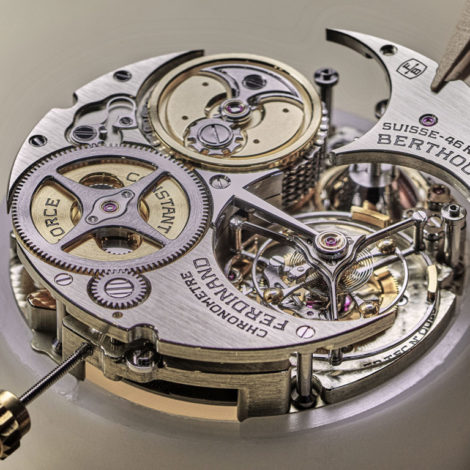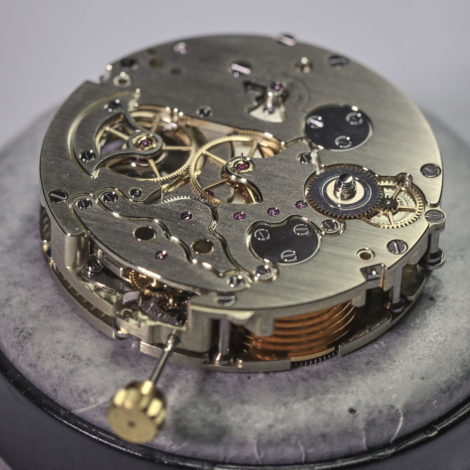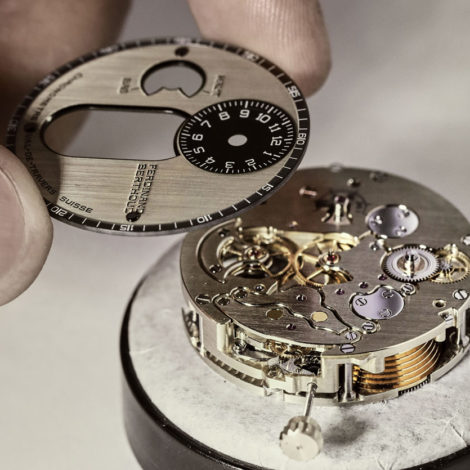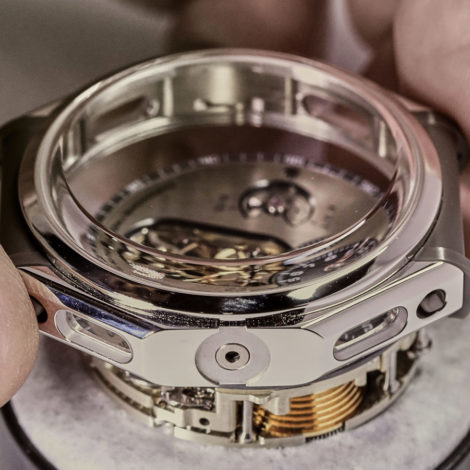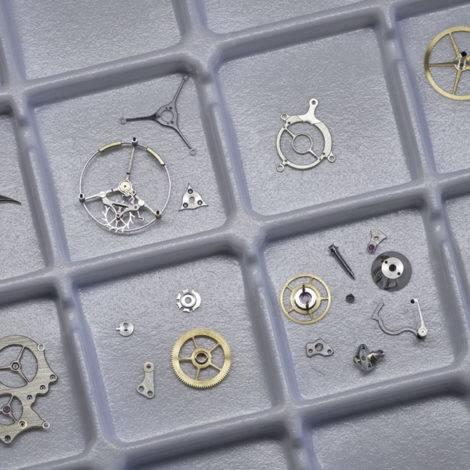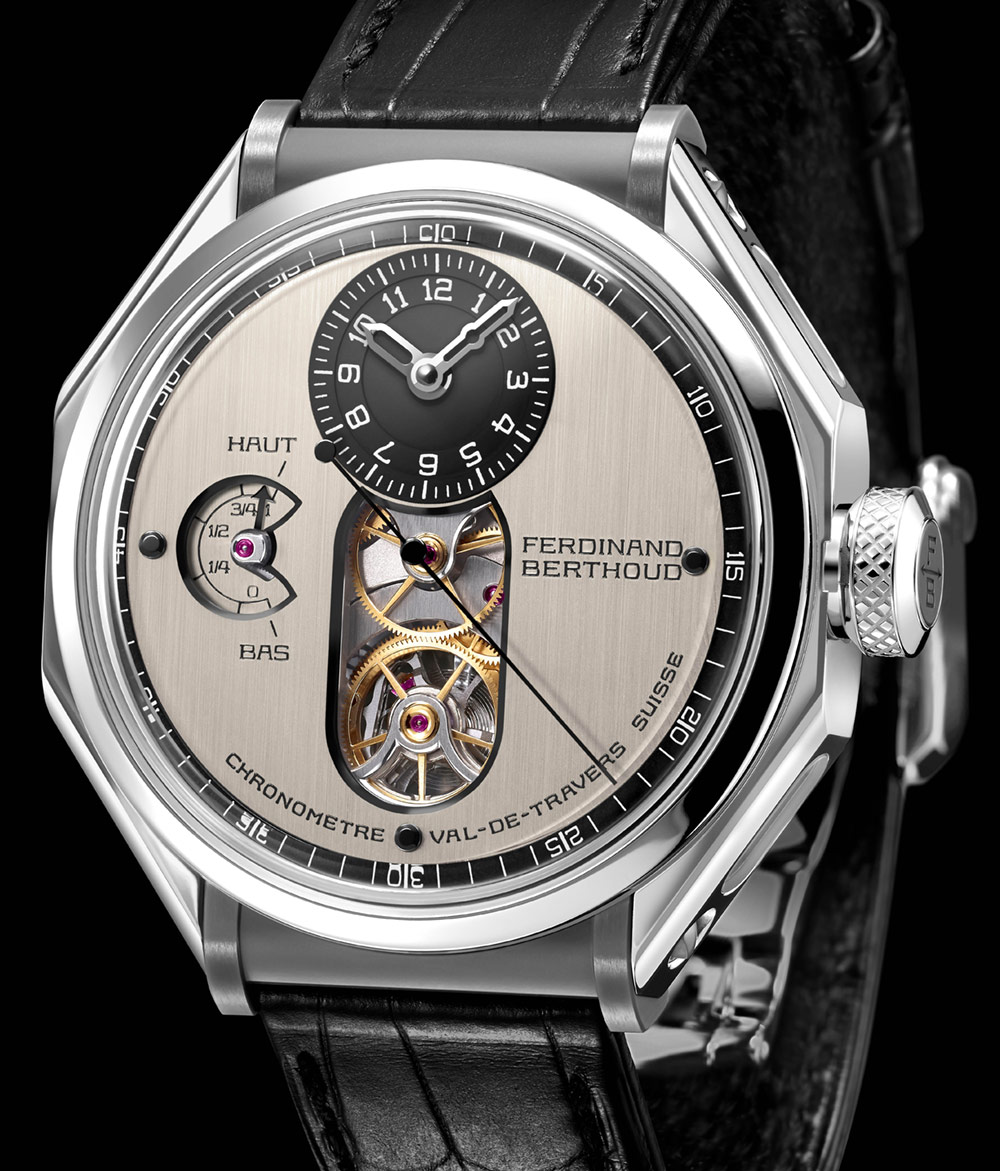
The recently launched Chronométrie Ferdinand Berthoud FB 1.3 is an update to the FB 1 watch that has been two years in the making. The brand is an haute horlogerie manufacture owned by Chopard and named after a historic watchmaker. La Chronométrie Ferdinand Berthoud is intended and considered to be the pinnacle of Chopard’s watchmaking expertise and capabilities, and as such it delivers plenty of horological complexity and ingenuity, packaged in a unique, appealing design.
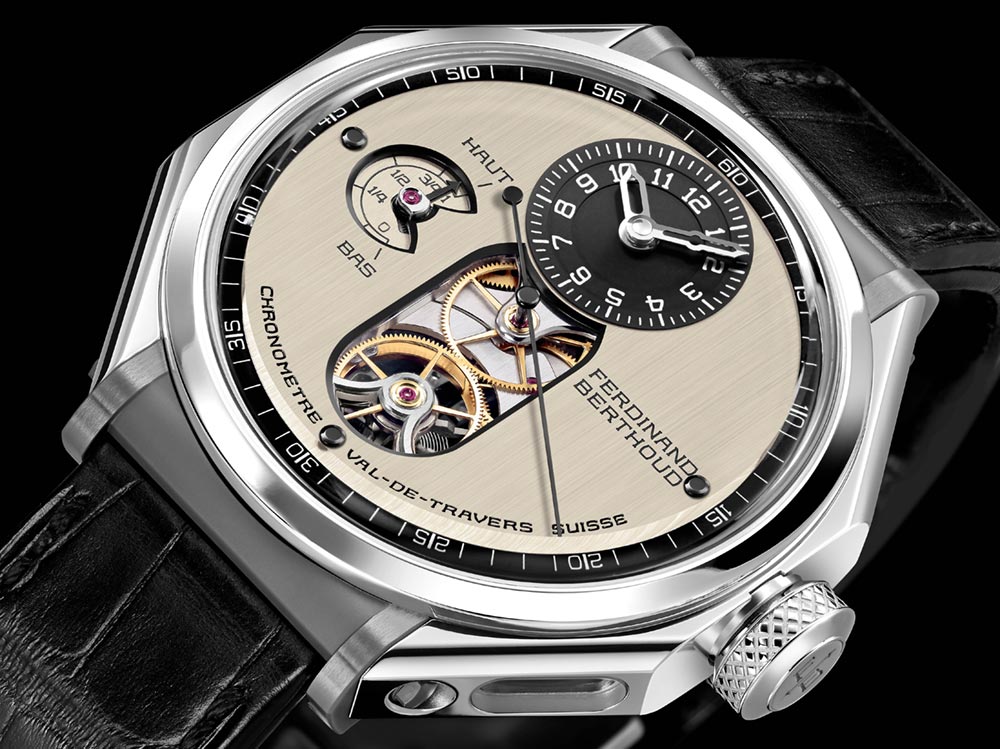
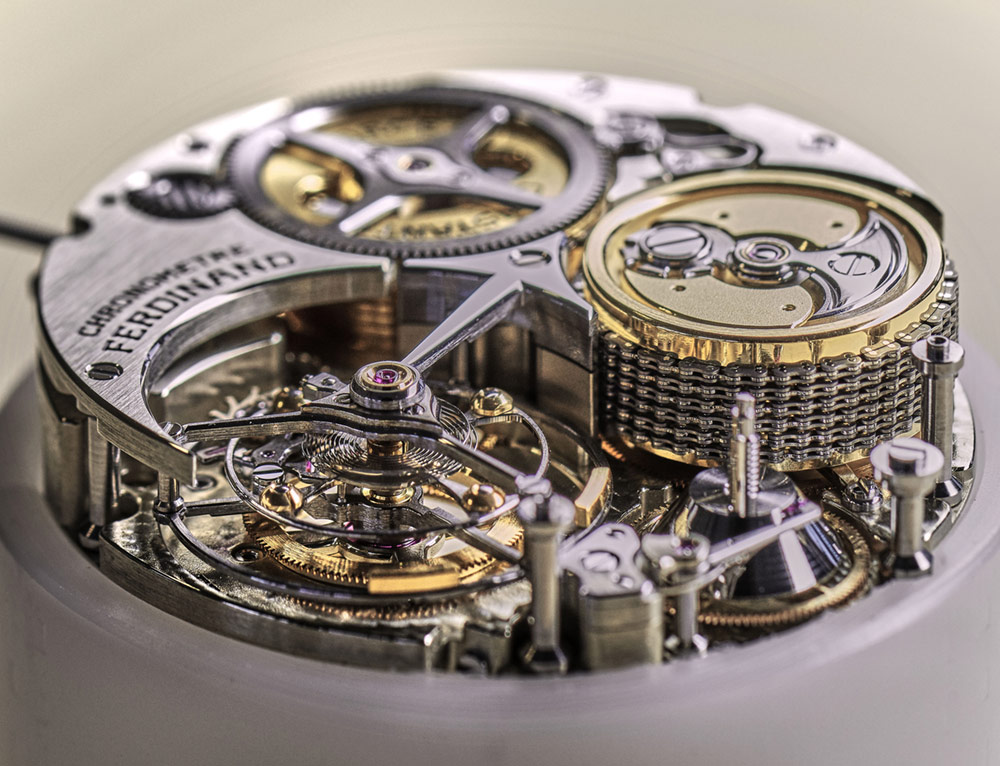
To begin with, I highly recommend reading David’s in-depth coverage of the brand and the FB 1 watch here. The New York minute version, however, is that after rights to the name were acquired, Chopard employed some of its best watchmakers and spent 6 years developing the FB 1 and its unique, in-house fusée-and-chain-driven movement. It’s a movement that apparently shares nothing in common with any of Chopard’s other movements and is chock-full of exclusive components.
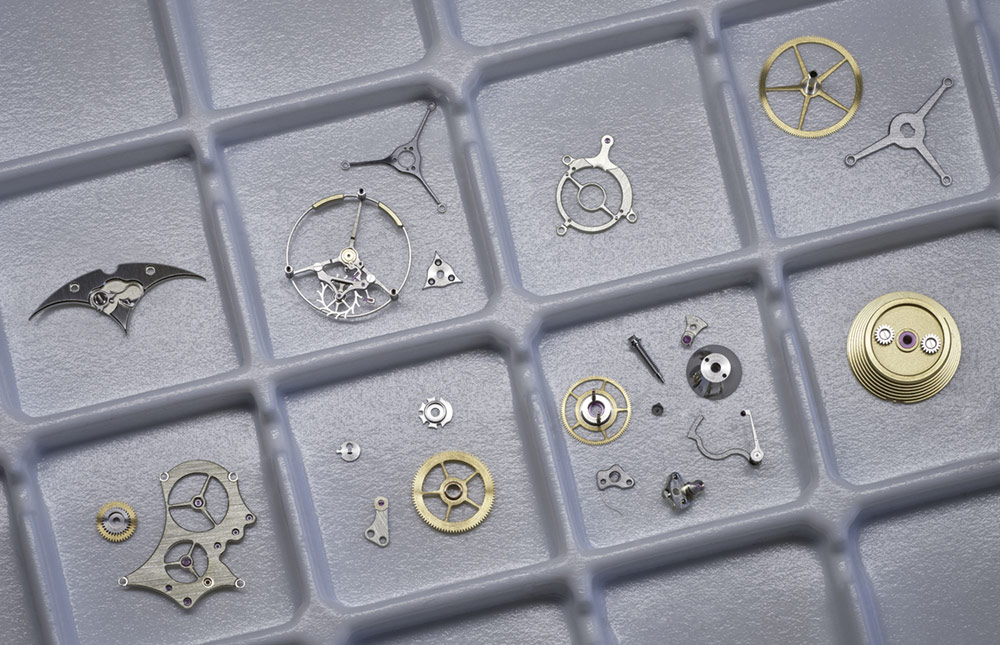
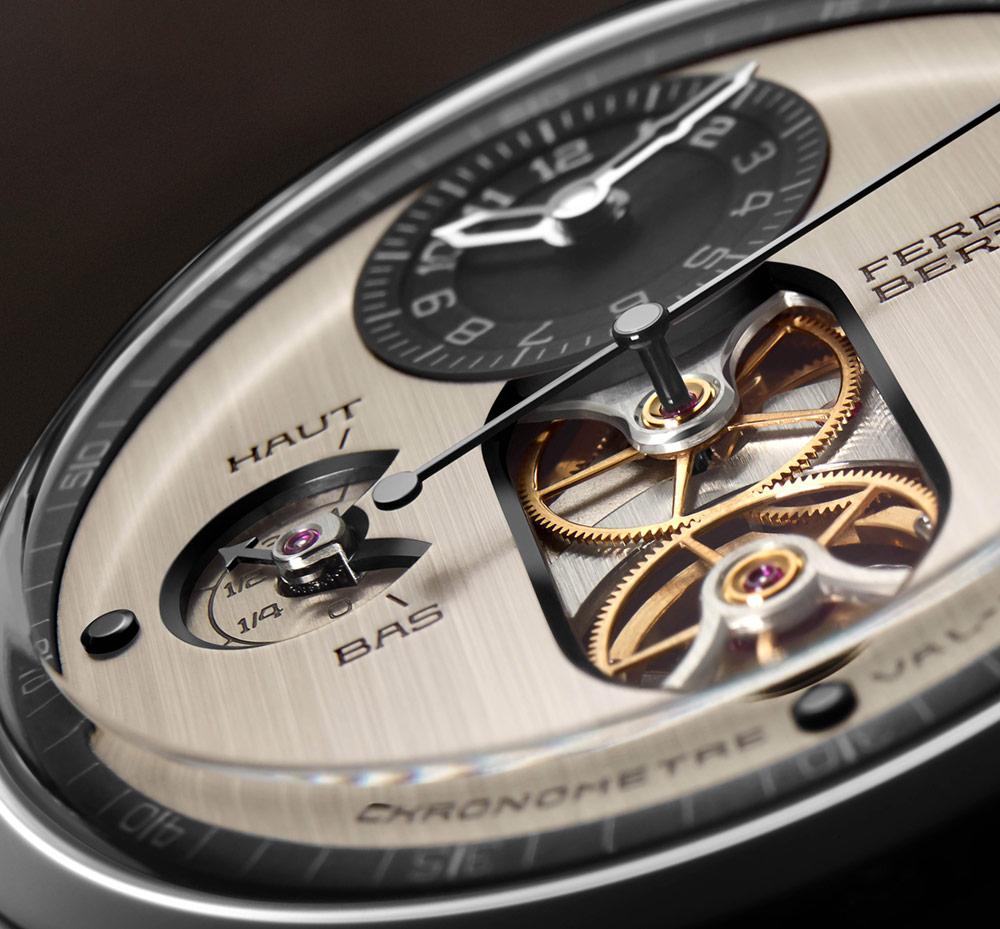
The Chronométrie Ferdinand Berthoud FB 1.3 has had a shorter gestation cycle because a lot of pieces have been carried over, of course. The most apparent difference is in case material and dial material – platinum and solid nickel silver, to be specific. It’s worth noting how long it can take for even small tweaks and changes in production materials to be fully realized. Given the extremely low production volumes and the dedicated team, there is a lot of iterative design and multiple rounds of testing and prototyping to go through. Even more so since the brand is the personal darling of Karl-Friedrich Scheufele, the Co-President of Chopard.
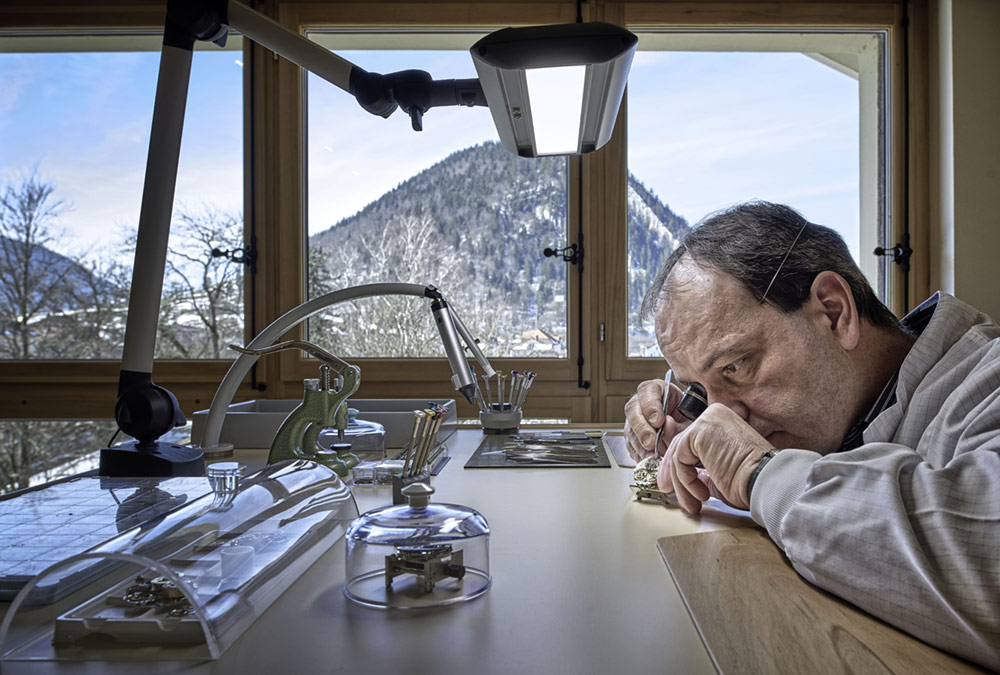
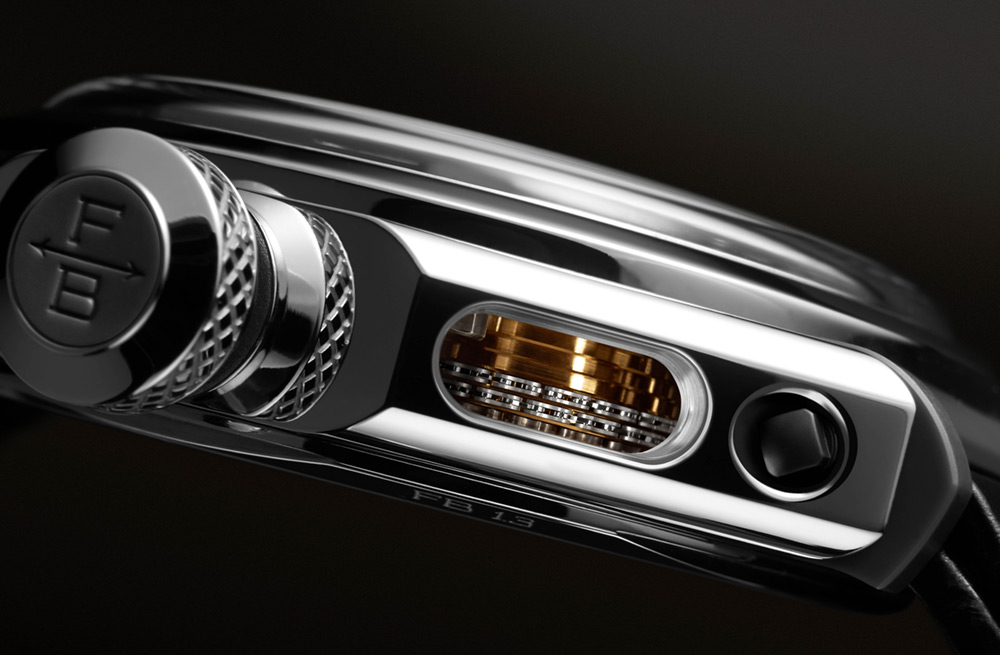
The FB 1.3 retains the signature 44mm by 13mm octagonal case, a design inspired by the chronometer suspension system of a ship, but it is now in 950 platinum with anthracite gray lugs in ceramic. The FB 1.1 was in white gold, and the FB 1.2 was rose gold. The case has an interesting construction (again, covered in detail in David’s article) where a cylindrical container holds the dial and movement and then slipped into the octagonal band like a sleeve, if you will. A great feature of these watches is the four openings in the case band that are set with sapphire and give the wearer a full view of some of the juiciest components of the movement – especially the flying fusée and chain. Small elements such as this are actually far more expensive to incorporate, especially at such low volumes, than one might expect.
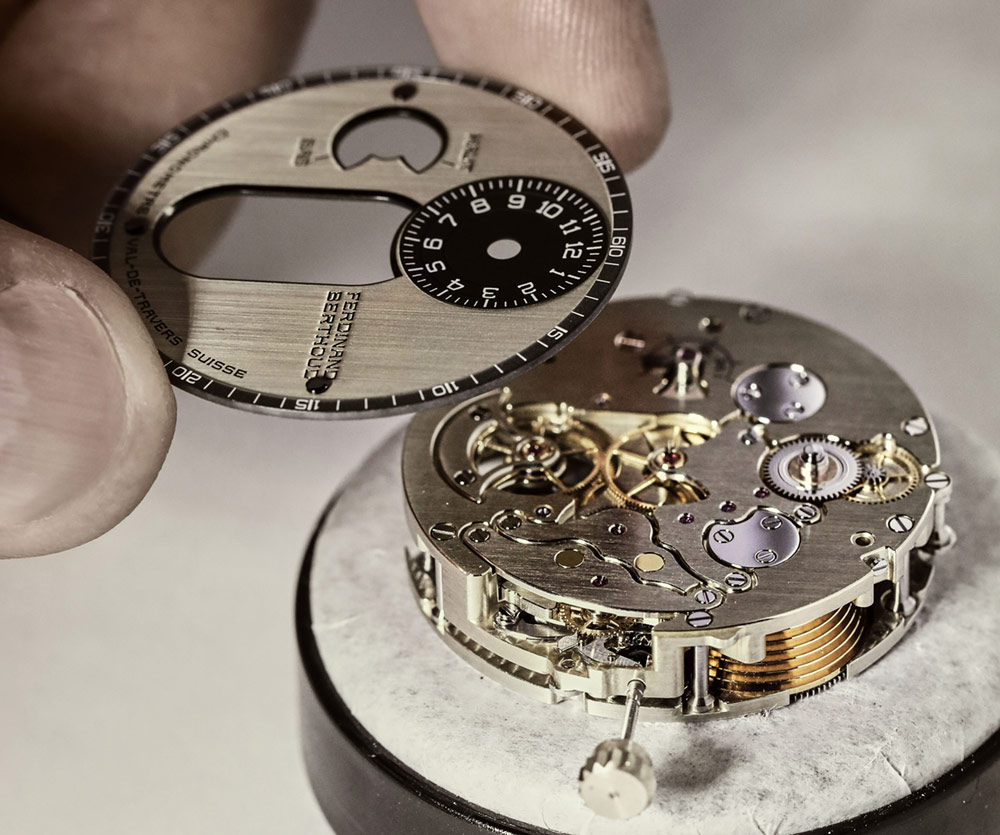
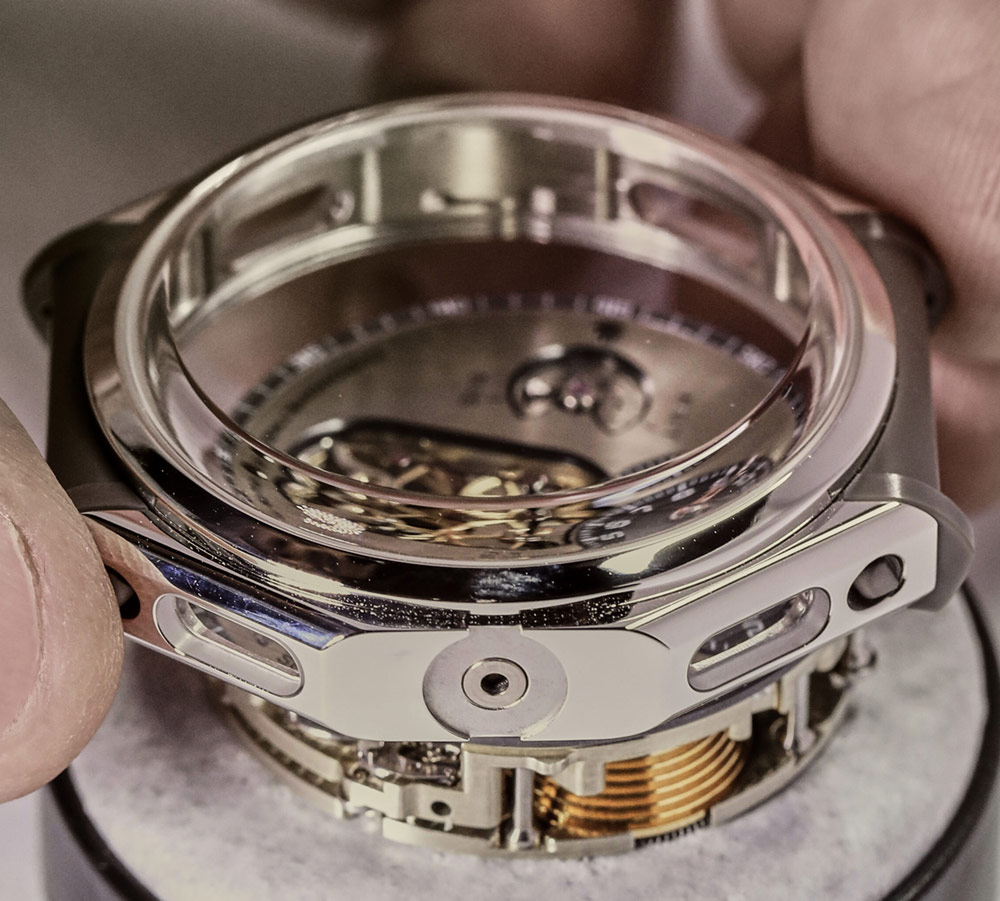
Suffice it to say that this watch has plenty of wrist presence – but still manages to look elegant and extremely serious. There are many angles, curves, and interaction points on the case, but everything is exemplary in finishing if David’s experience with the predecessors is anything to go by. The crown is well sized and knurled for ease of use but doesn’t feel out of place from the rest of the design. The use of a deeply domed sapphire crystal helps give the watch a slimmer feel (by keeping the case band thin) and helps all the design “flow.”
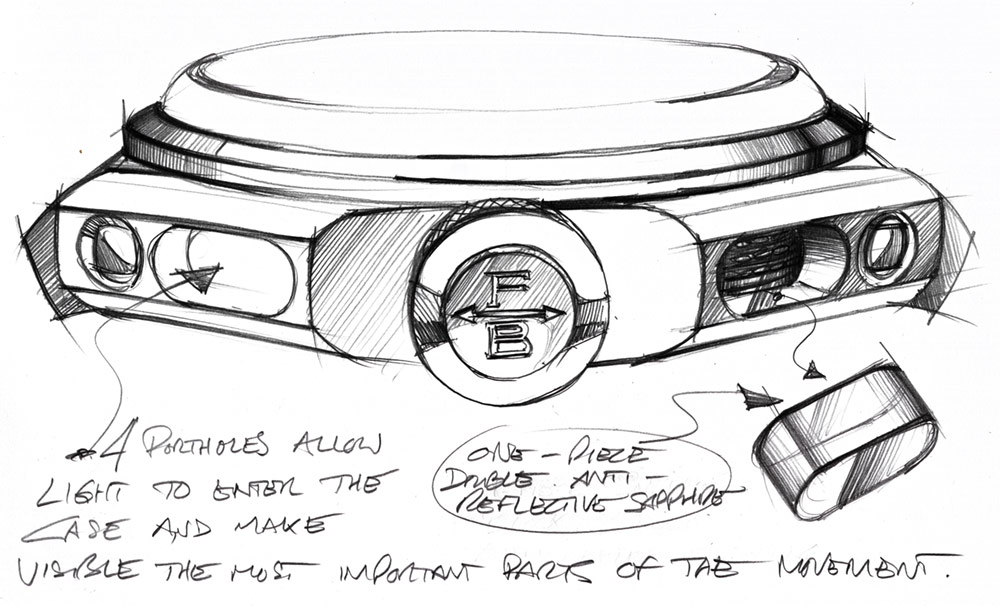
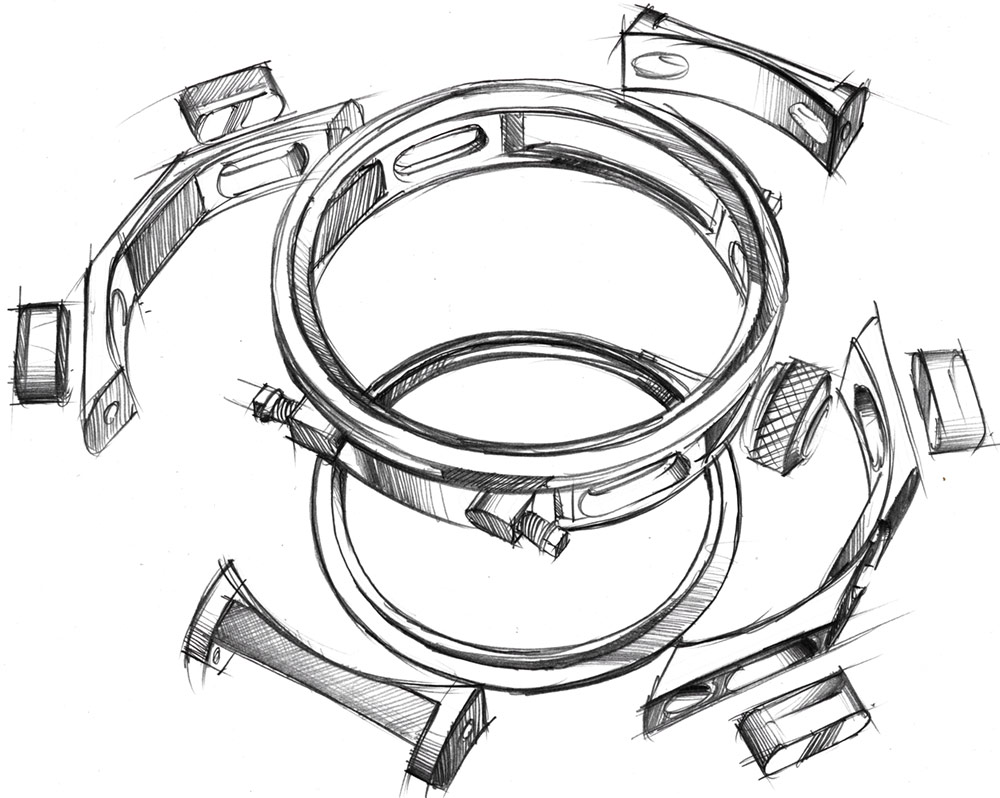
While you might spot the watch from afar by its unusual case shape, it is the dial design and the elliptical aperture that will demand attention when you first look at it up close. At the top of the dial is a deep black lacquer sub-dial that indicates hours and minutes, using markers painted in a contrasting white. The shape of the hour and minute hand were apparently based on a design that Ferdinand Berthoud, the watchmaker, personally favored. They are faceted, openworked white gold and in a shape, best described as “daggers.”
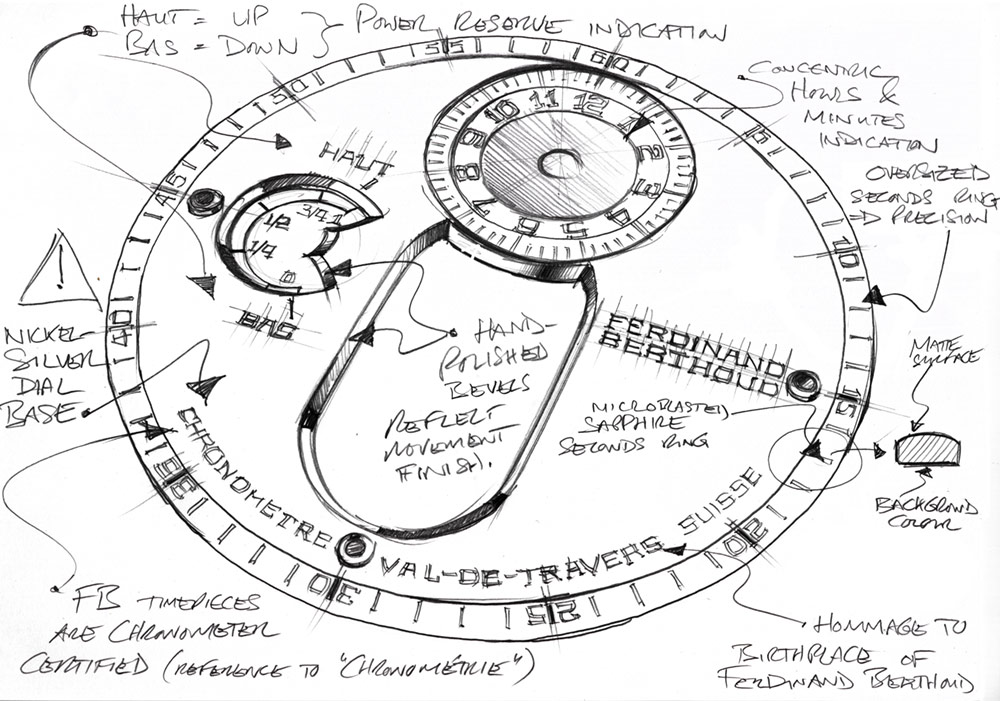
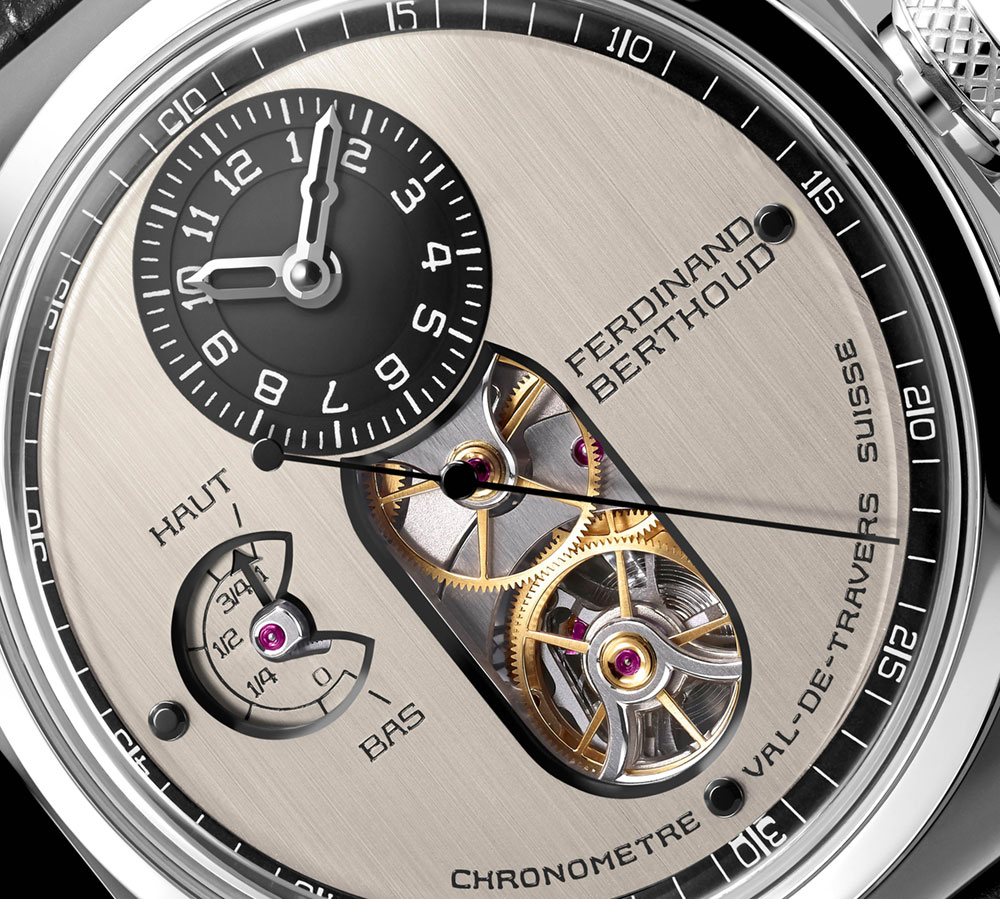
To the left of the dial is the power reserve indicator which is perhaps the part of this watch that is closest to being ordinary-looking. Even this is hand-chamfered and nickel-plated, not to mention the 0, ¼, ½, and ¾ markings which are engraved by hand. This indicator is balanced on the right, by the brand name painted on using a custom font in a contrasting black. The vertical stain brushing of nickel colored silver gives the dial subtlety, visual interest, and a warmth that I find hard to describe but very appealing.
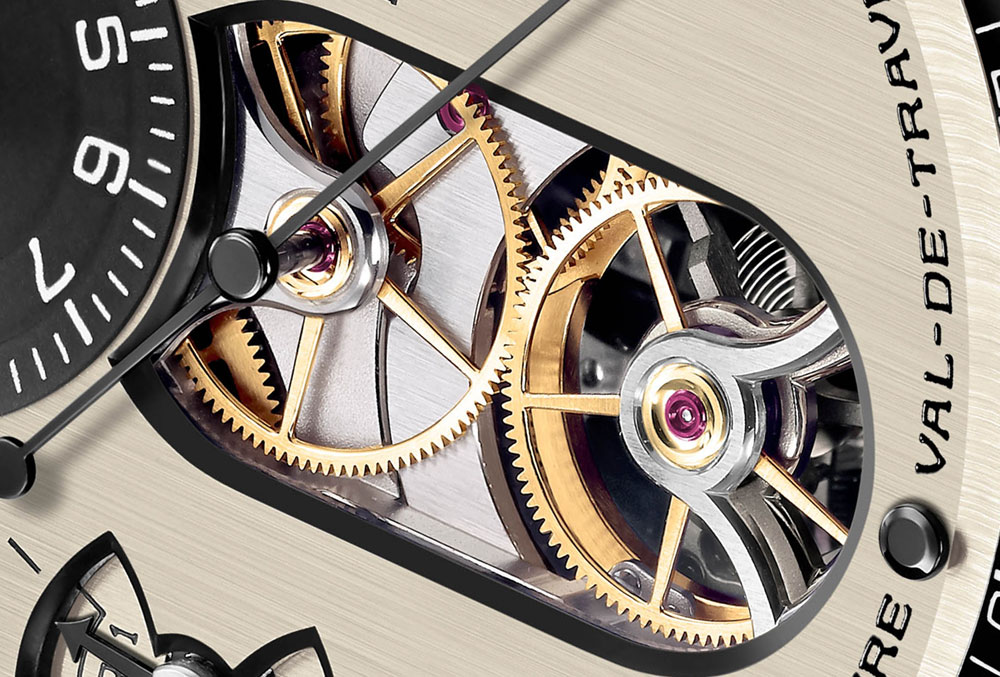
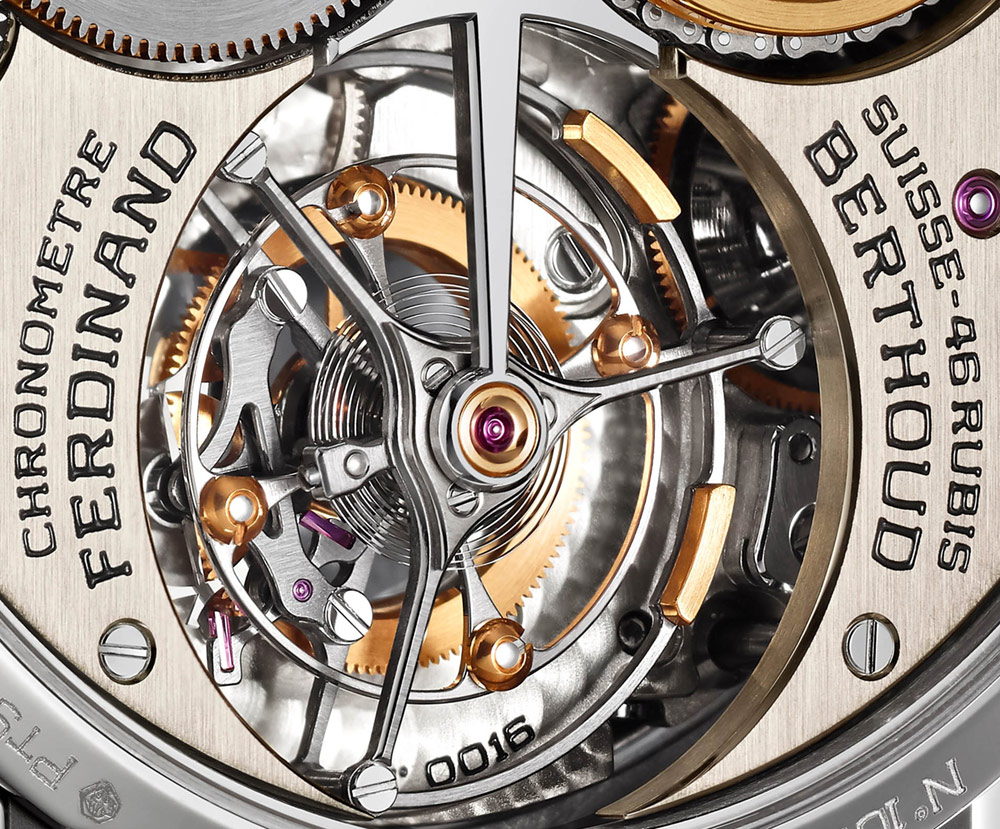
Arguably the most unique (if not best) part is the oval aperture in the middle. It’s a confusing sight at first, as you clearly see a wheel driving the black seconds hand but also what seems to be a tourbillon right below it. The simple answer is that there is no functional need for this, but it’s a pleasure to observe for any watch enthusiast. The 60-second tourbillon on the bottom directly drives the running seconds hand – this is an impressive feat given the required ratios between the interacting wheels, tight tolerance for the gear teeth, and the torque demands on the escapement.
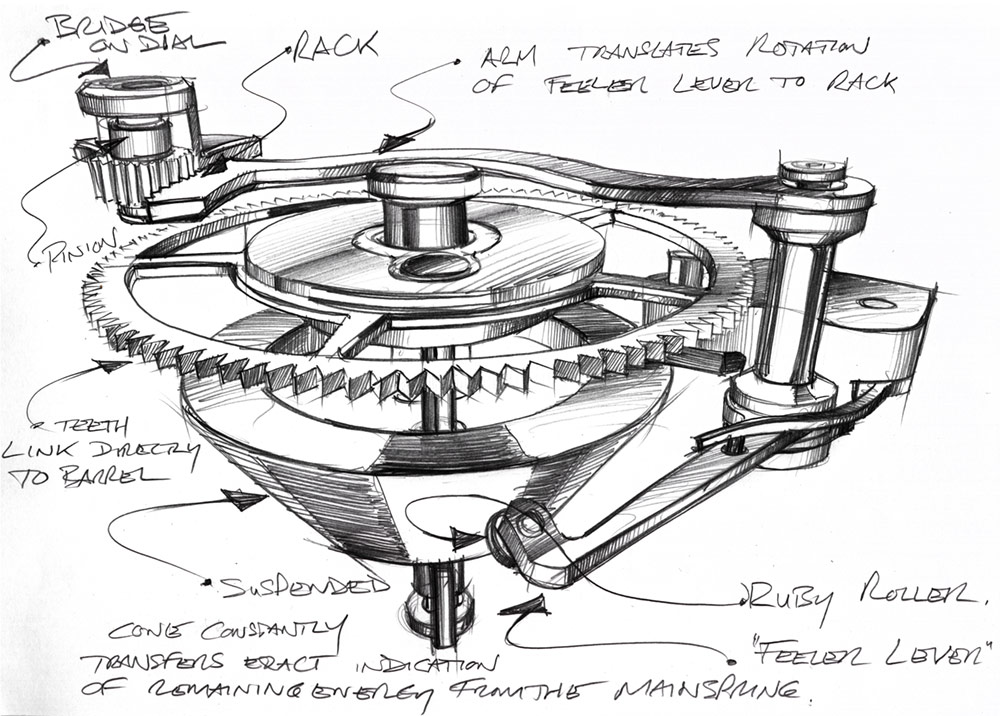
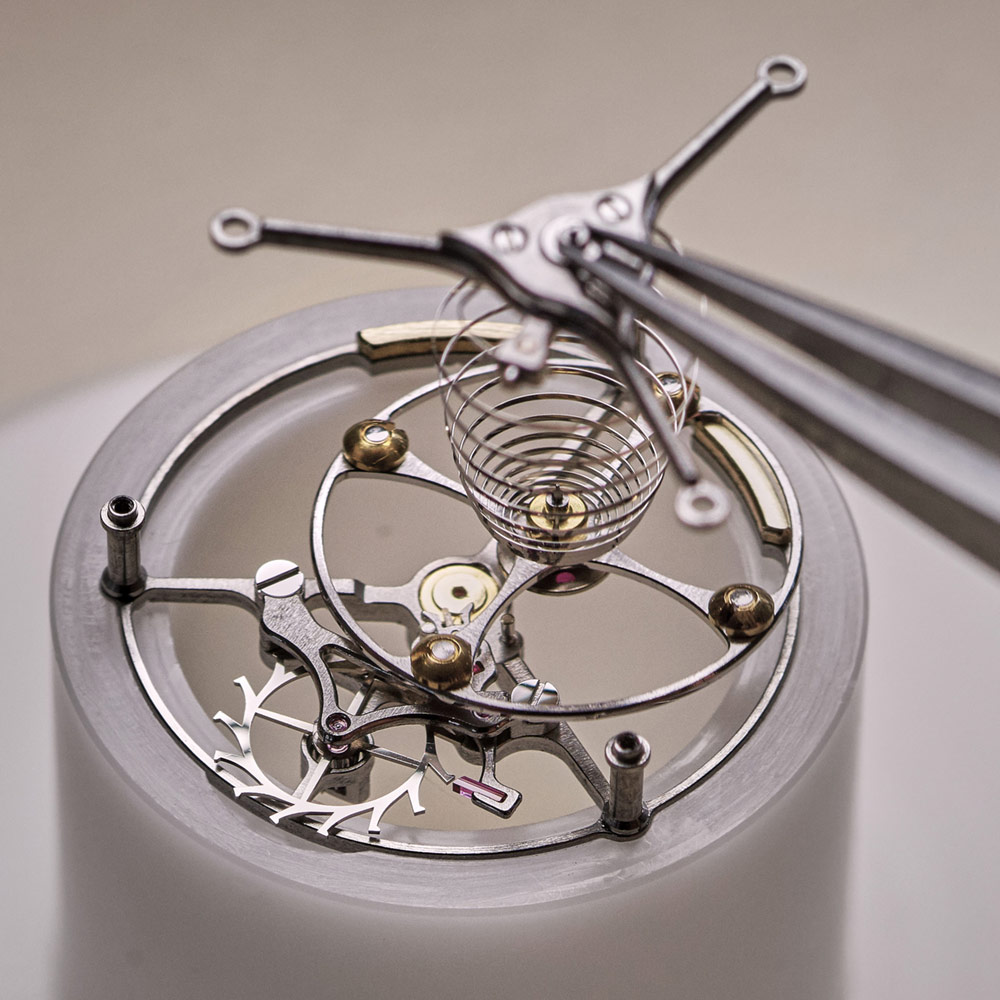
Speaking of torque brings us to the movement, the beating heart, and the reason development took 6 years. At this point, I will again recommend referring to David’s article for a more detailed look, but essentially this movement is the horology enthusiast’s wet dream. It has a 60-second tourbillon, a flying fusée and chain mechanism with 790 parts, a 28.5cm-long chain, and a Maltese cross power limiter to name just the most impressive elements. Given that the brand is named after a master chronometer maker who was employed by French and English royalty and their navies, it is only appropriate that timekeeping accuracy is at the heart of this movement.
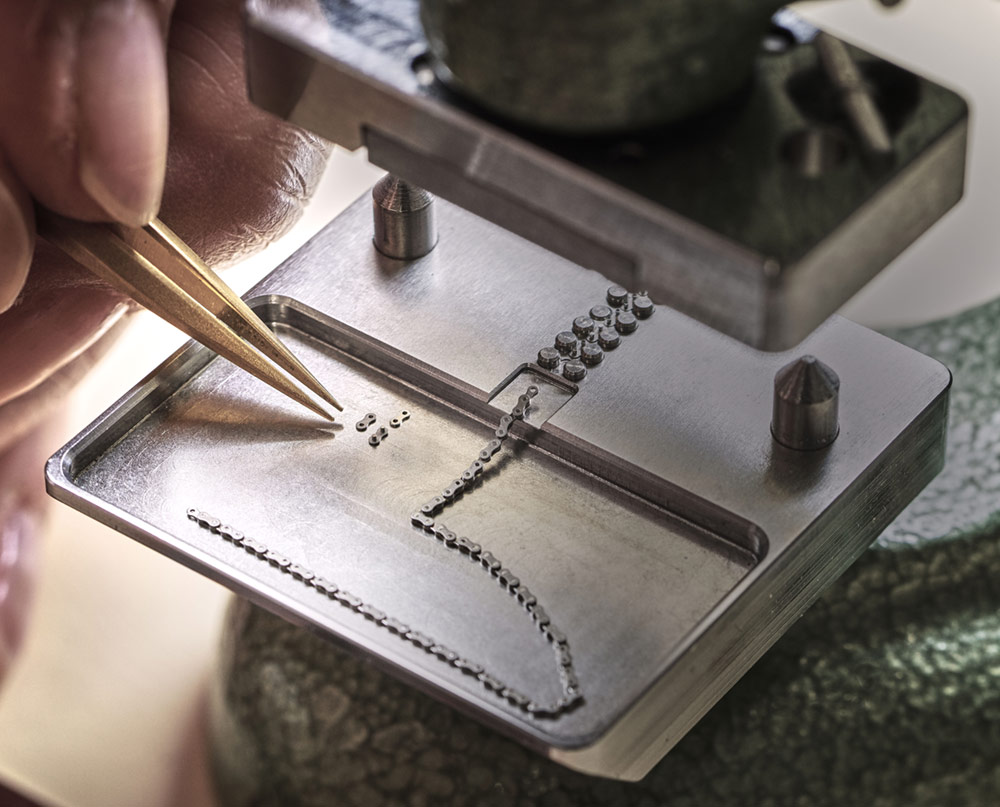
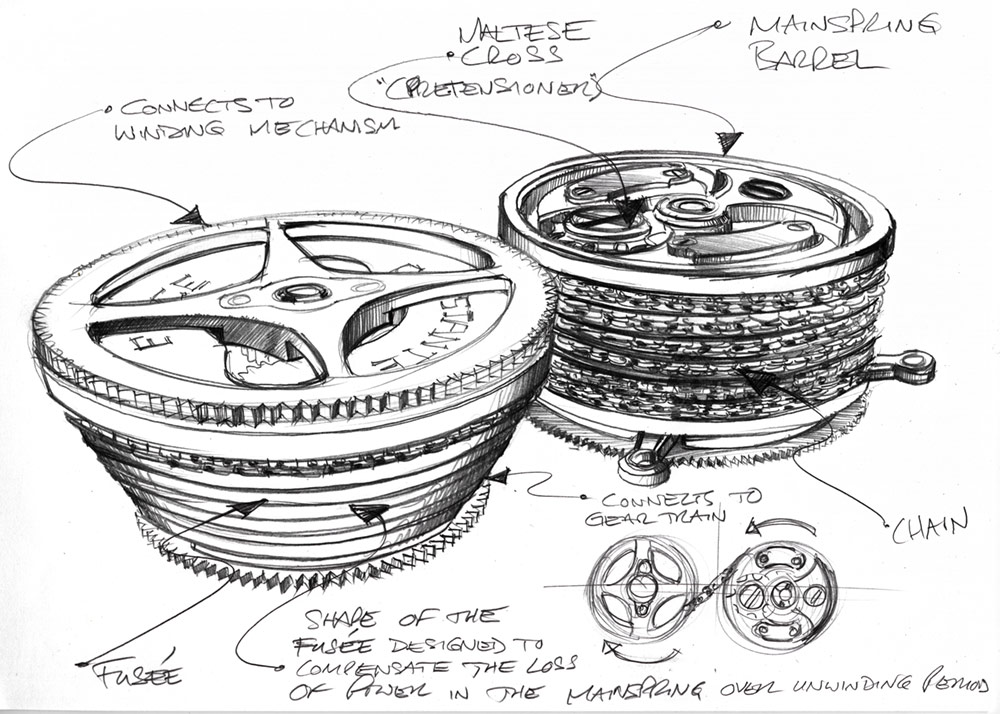
The fusée and chain mechanism is meant to ensure that a constant torque is delivered to the gear train, while the Maltese cross power limiter prevents the watch from functioning when torque drops below a certain threshold. Due to the accuracy demands and the power limiter, the caliber FB-T.FC offers “only” 53 hours of power reserve when it is theoretically capable of 80 hours. It beats at 21,600bph and is, of course, COSC-certified. A unique element of the caliber FB-T.FC borrowed from the watchmaker is the use of titanium columns to secure the movement to the mainplate and bridges. This was a technique used back in the day when manufacturing tolerances were not as precise as today and it was simpler to cut a column to a precise height.
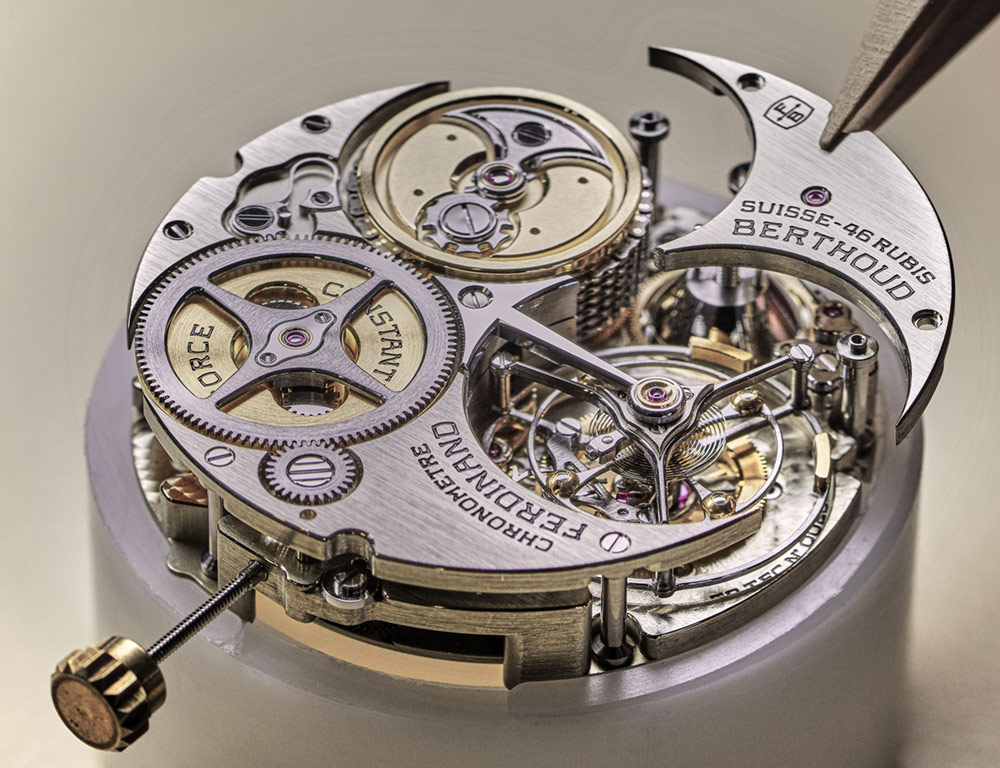
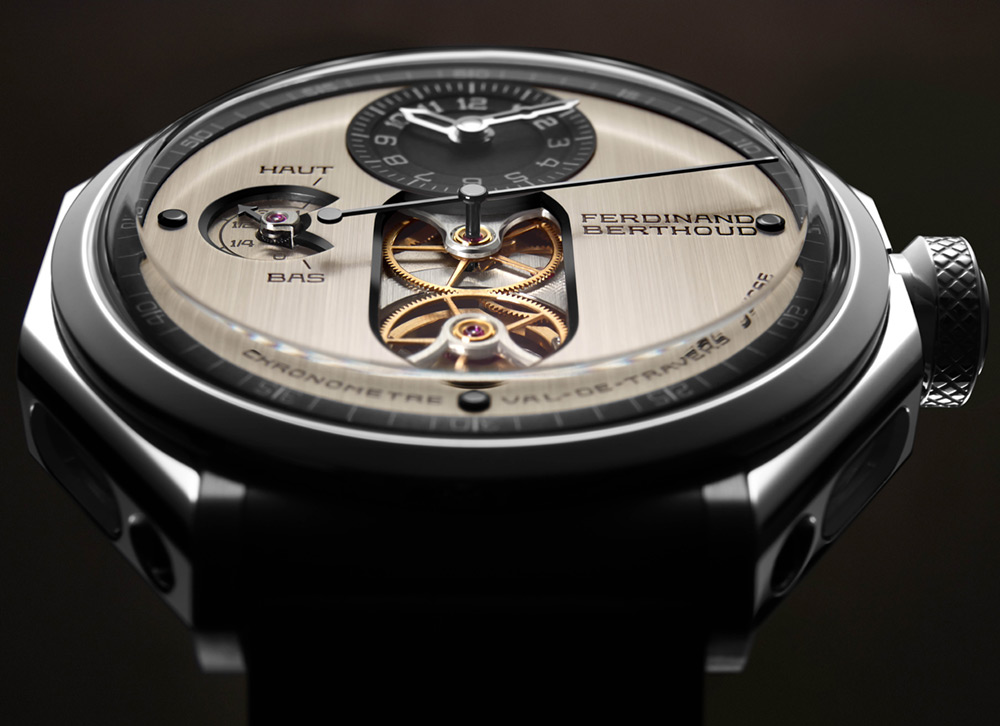
There are plenty other elements to this movement that I could go on writing about, but suffice it to say it is impressive with various different finishes and watchmaking techniques on display. This movement and design is now nearly 2 years old – a good point to look back and consider how the design with all its unique elements has aged, and in my opinion, it has aged gracefully and is still just as impressive. Even to this day, it is rare to come across this watch in the wild. I believe it takes a mature, serious (and well-heeled, of course) collector to appreciate and comfortably wear something like a Ferdinand Berthoud watch, and it is a watch that rewards it’s wearer over time and with plenty of interaction. The Chronométrie Ferdinand Berthoud FB 1.3 ships on a black alligator strap with platinum deployant (or pin buckle on request) and is available at boutiques and authorized retailers for a USD price of $260,400. ferdinandberthoud.ch

